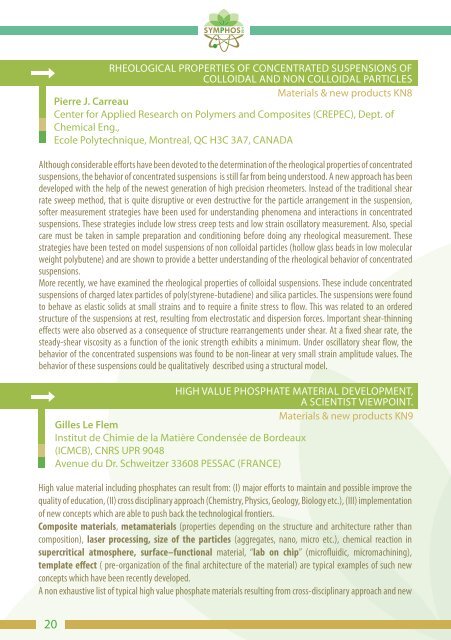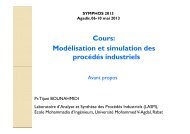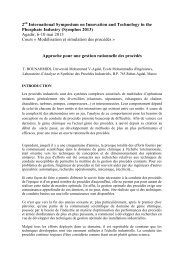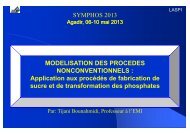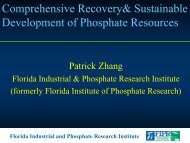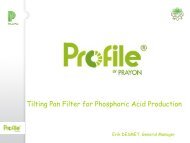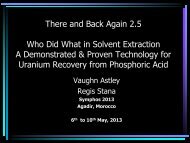Abstract SYMPHOS 2011
Abstract SYMPHOS 2011
Abstract SYMPHOS 2011
Create successful ePaper yourself
Turn your PDF publications into a flip-book with our unique Google optimized e-Paper software.
20<br />
RHEOLOGICAL PROPERTIES OF CONCENTRATED SUSPENSIONS OF<br />
COLLOIDAL AND NON COLLOIDAL PARTICLES<br />
Materials & new products KN8<br />
Pierre J. Carreau<br />
Center for Applied Research on Polymers and Composites (CREPEC), Dept. of<br />
Chemical Eng.,<br />
Ecole Polytechnique, Montreal, QC H3C 3A7, CANADA<br />
Although considerable efforts have been devoted to the determination of the rheological properties of concentrated<br />
suspensions, the behavior of concentrated suspensions is still far from being understood. A new approach has been<br />
developed with the help of the newest generation of high precision rheometers. Instead of the traditional shear<br />
rate sweep method, that is quite disruptive or even destructive for the particle arrangement in the suspension,<br />
softer measurement strategies have been used for understanding phenomena and interactions in concentrated<br />
suspensions. These strategies include low stress creep tests and low strain oscillatory measurement. Also, special<br />
care must be taken in sample preparation and conditioning before doing any rheological measurement. These<br />
strategies have been tested on model suspensions of non colloidal particles (hollow glass beads in low molecular<br />
weight polybutene) and are shown to provide a better understanding of the rheological behavior of concentrated<br />
suspensions.<br />
More recently, we have examined the rheological properties of colloidal suspensions. These include concentrated<br />
suspensions of charged latex particles of poly(styrene-butadiene) and silica particles. The suspensions were found<br />
to behave as elastic solids at small strains and to require a finite stress to flow. This was related to an ordered<br />
structure of the suspensions at rest, resulting from electrostatic and dispersion forces. Important shear-thinning<br />
effects were also observed as a consequence of structure rearrangements under shear. At a fixed shear rate, the<br />
steady-shear viscosity as a function of the ionic strength exhibits a minimum. Under oscillatory shear flow, the<br />
behavior of the concentrated suspensions was found to be non-linear at very small strain amplitude values. The<br />
behavior of these suspensions could be qualitatively described using a structural model.<br />
HIGH VALUE PHOSPHATE MATERIAL DEVELOPMENT,<br />
A SCIENTIST VIEWPOINT.<br />
Materials & new products KN9<br />
Gilles Le Flem<br />
Institut de Chimie de la Matière Condensée de Bordeaux<br />
(ICMCB), CNRS UPR 9048<br />
Avenue du Dr. Schweitzer 33608 PESSAC (FRANCE)<br />
High value material including phosphates can result from: (I) major efforts to maintain and possible improve the<br />
quality of education, (II) cross disciplinary approach (Chemistry, Physics, Geology, Biology etc.), (III) implementation<br />
of new concepts which are able to push back the technological frontiers.<br />
Composite materials, metamaterials (properties depending on the structure and architecture rather than<br />
composition), laser processing, size of the particles (aggregates, nano, micro etc.), chemical reaction in<br />
supercritical atmosphere, surface–functional material, “lab on chip” (microfluidic, micromachining),<br />
template effect ( pre-organization of the final architecture of the material) are typical examples of such new<br />
concepts which have been recently developed.<br />
A non exhaustive list of typical high value phosphate materials resulting from cross-disciplinary approach and new


